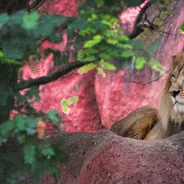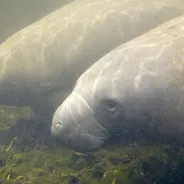The modern world has forced many animal species into extinction or to the brink of it, but there is hope thanks to conservation projects.
Cast in point, the story of the Tasmanian devil, which has returned to the Australian wild for the first time in 3,000 years.
Australian NGO Aussie Ark said in a statement cited by CNN that the carnivorous marsupials have been released into their new home of a 400-hectare (988-acre) wildlife sanctuary north of Sydney, New South Wales.
Watch the historic release of the Tasmanian devils below:"In 100 years, we are going to be looking back at this day as the day that set in motion the ecological restoration of an entire country," said Tim Faulkner, president of Aussie Ark.
"Not only is this the reintroduction of one of Australia's beloved animals, but of an animal that will engineer the entire environment around it, restoring and rebalancing our forest ecology after centuries of devastation from introduced foxes and cats and other invasive predators."
The arrival of dingoes caused Tasmanian devils to die out on mainland Australia, restricting them to the island of Tasmania, and their already reduced numbers were further lessened by a contagious cancer known as Devil Facial Tumor Disease (DFTD), which has wiped out 90% of their population since its 1996 discovery, CNN reports.
As a result, there are just 25,000 of the animals left in the wild, and Aussie Ark has spent the past decade tirelessly trying to conserve them.

The 11 devils released onto the mainland on September 10 join a pre-existing group of 15, which means that there are now 26 wild Tasmanian devils on mainland Australia.
The devils are a part of Aussie Ark's breeding program, which has expanded from 44 of the animals in 2011 to over 200 today, raising the devils with natural behavior fostering methods that give them the best possible chance in the wild.
"Without Aussie Ark's incredible work and perseverance over all of these years, the recent devil reintroduction would not have been possible and instead of looking forward to the recovery of the species, we would be watching the devil slip into extinction," said Don Church, president of the Global Wildlife Conservation charity.
"This is an incredible example of how to rewild our planet, bringing back the natural systems to the benefit of all life on Earth."












